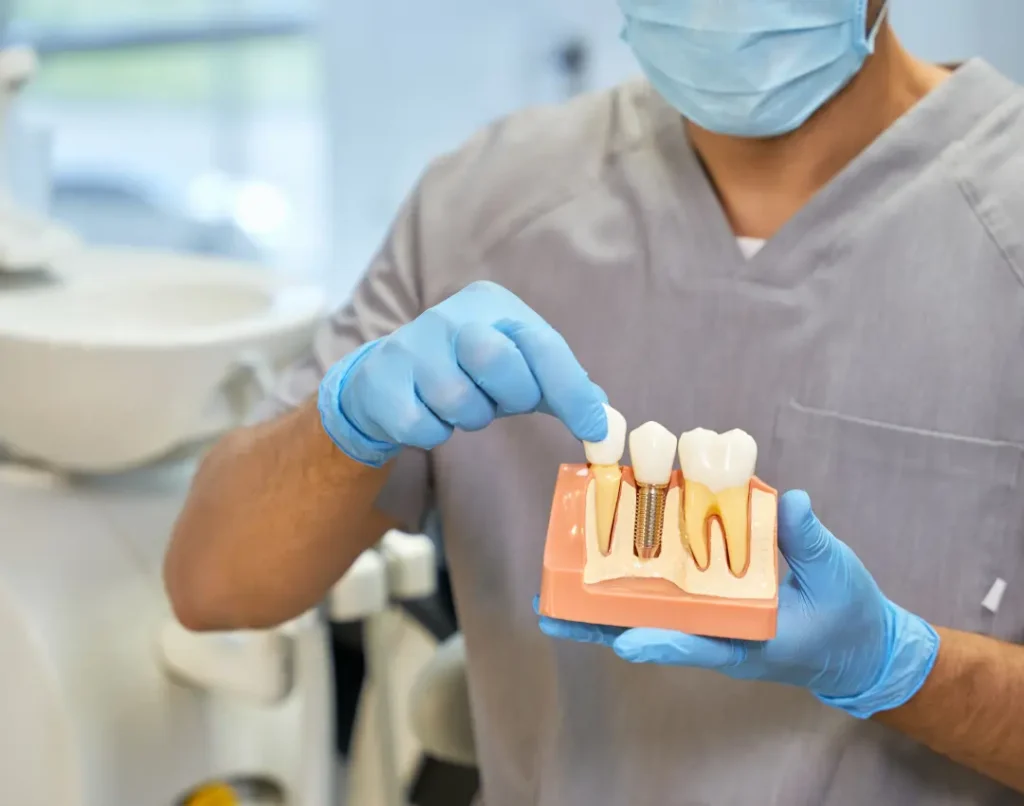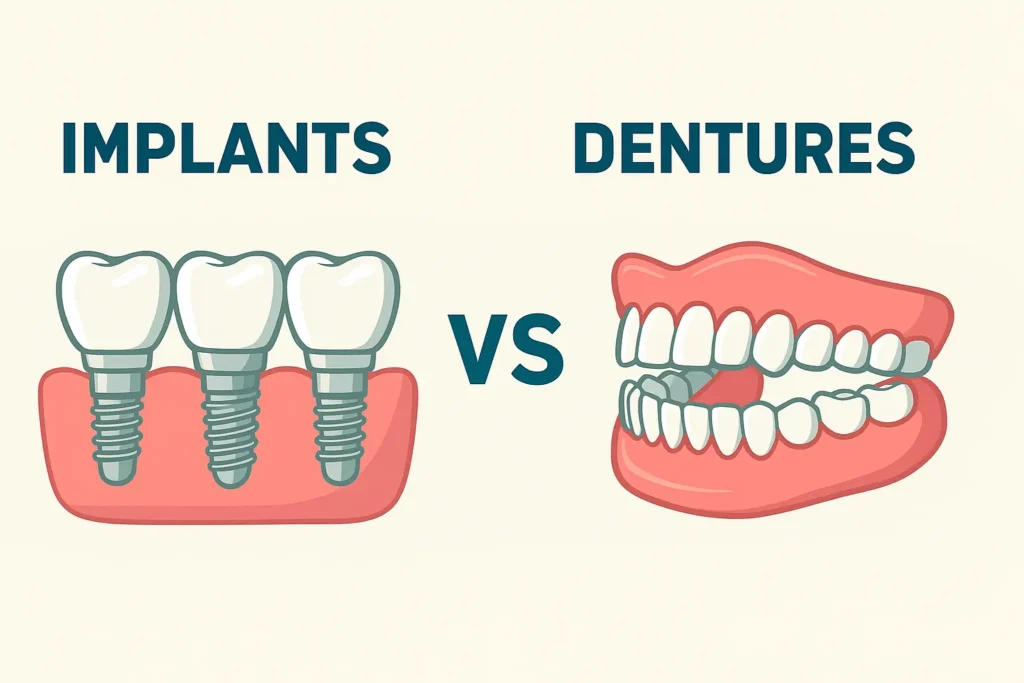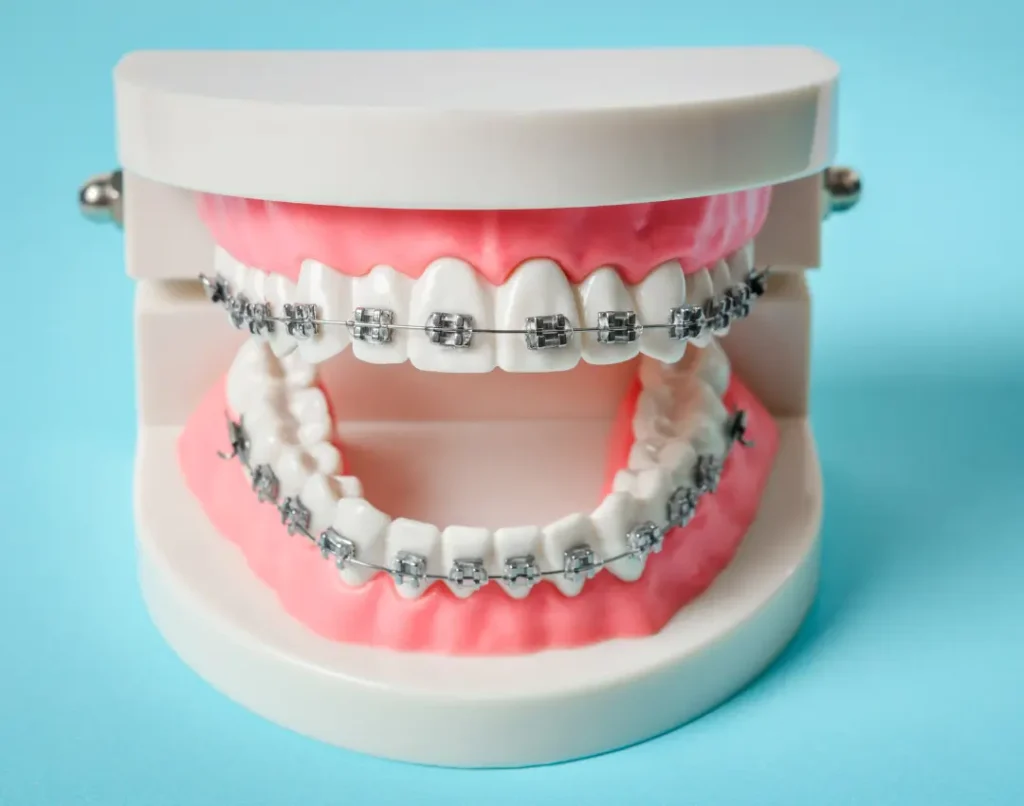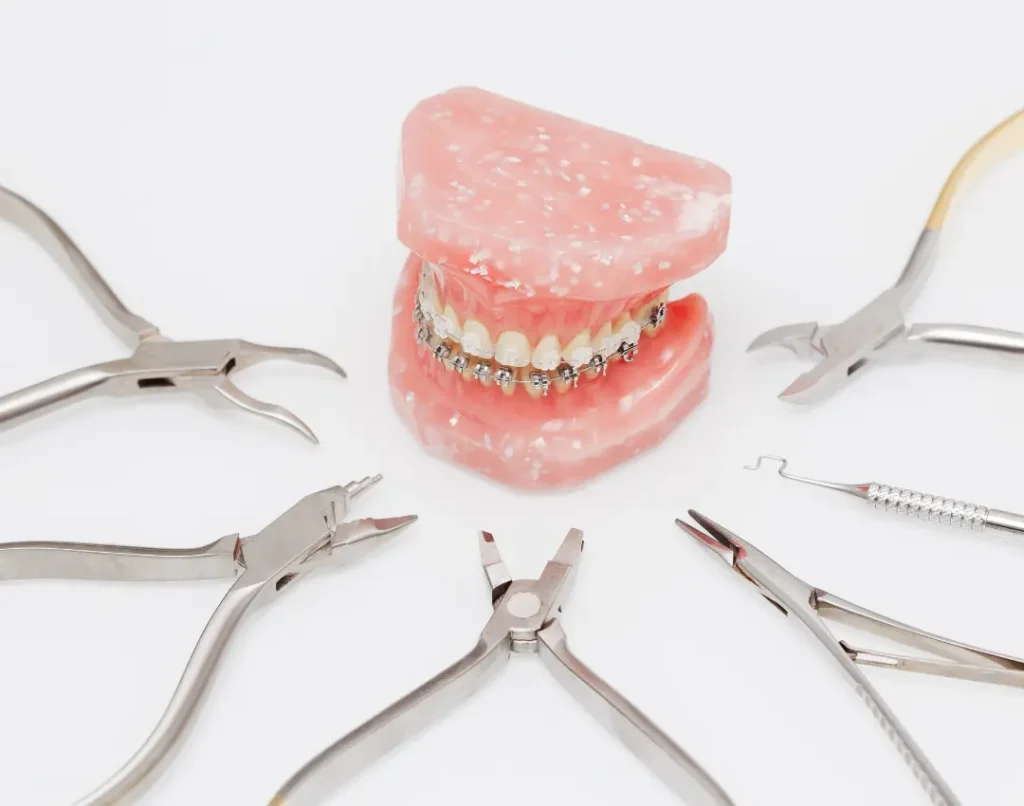Having straight teeth is more than just about looking good. It also helps keep your mouth healthy and makes it easier to eat and speak. However, many teeth have gaps or need to be aligned. In such cases, we suggest using braces or aligners.
We have seen a lot of confusion among patients when choosing between braces and aligners. This blog will educate you about the importance of teeth alignment, braces, and aligners, their differences, and their suitability.
When your teeth are properly aligned, they look nice, but they also help you chew food better and talk clearly. Digestion starts with our mouth. So if you have straight teeth, you can clean them easily leaving no cavities or gum disease. This can lead to overall good health. Straight teeth are easier to clean. Due to this, you can stay away from many gum diseases and cavaties.
Understanding these issues is the first step in determining the best way to get teeth straight and healthy.
Braces are a common way to straighten teeth. They help fix issues like crowding, gaps, overbites, and underbites. You can slowly move your teeth into the right position by using braces. But did you know there are different types of braces? Let’s explore the options.
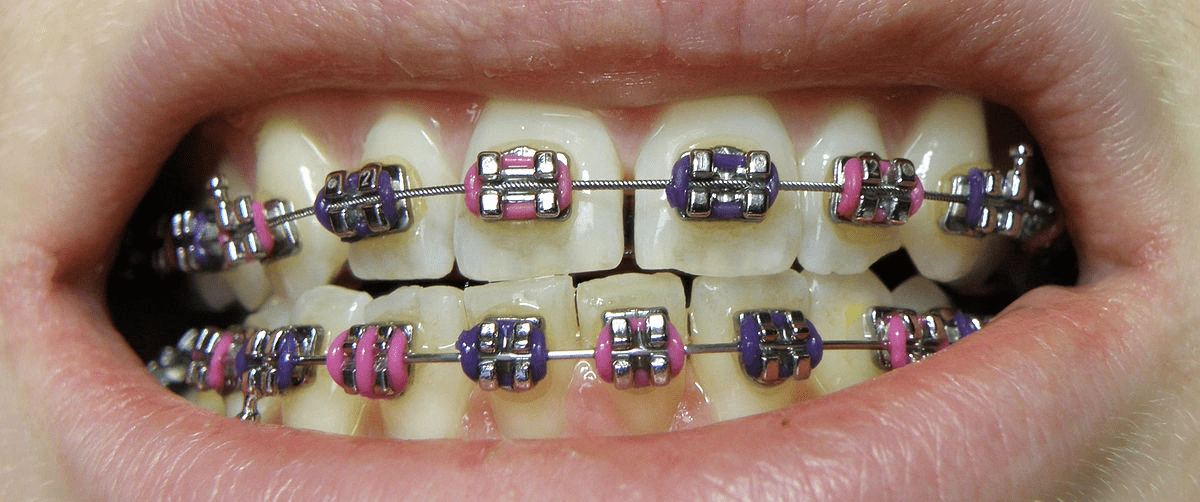
Traditional braces are the most widely used braces made using a metal. They have metal brackets glued to each tooth, connected by a wire. The wire is tightened over time, gently moving your teeth. These braces are strong and work well for most people. But what if you want less noticeable braces?
Ceramic braces also work like metal braces but are less noticeable. The brackets are made of clear or tooth-coloured materials, so they blend in with your teeth. They’re a great option if you want something more discreet. However, what if you don’t want braces that are visible at all?
Lingual braces are hidden from view. They are placed behind your teeth so no one can see them. They work just like regular braces but are entirely out of sight. This sounds perfect, but is there a way to have braces that are even easier to manage?
Self-ligating braces use special clips instead of rubber bands to hold the wire. This means fewer visits to the dentist and potentially faster treatment. Now that you know the types, how do braces move your teeth?
Braces work by applying constant pressure on your teeth. The brackets are attached to your teeth, and a wire connects them. Rubber bands might also be used to help with the movement. Over time, this pressure shifts your teeth into the right place. But how long will it take?
The time you’ll need to wear braces depends on your specific situation. On average, most people wear them for about 1 to 3 years. Now that you understand braces, it’s easier to see how they can help create a healthy, beautiful smile.
Aligners are a modern way to straighten teeth without using braces. They are straightforward plastic trays that fit over your teeth, gently moving them into the correct position. If you’re looking for a more discreet option than braces, aligners might be the perfect choice. Let’s dive into how they work.
Clear aligners, like Invisalign, are nearly invisible. They are made of clear plastic, so most people won’t even notice you’re wearing them. Unlike braces, there are no metal brackets or wires. This makes them a popular choice for those who want a subtle way to straighten their teeth. But how do these trays work?
Aligners are custom-made just for you. Your dentist will take a 3D scan of your teeth to create a series of trays that will gradually move your teeth. You wear each set of aligners for about two weeks, then switch to the next set. Since they’re removable, you can take them out when eating, brushing, or flossing, making them super convenient. But how long do you need to wear them?
Most people wear aligners for 12 to 18 months, depending on their needs. The length of treatment is similar to braces, but since aligners are so easy to wear, many people find the process more comfortable. Now that you know what aligners are, you can see why they’re a popular alternative to traditional braces.
Feature | Braces | Aligners |
Effectiveness for Complex Cases | Very effective for complex dental issues. | Effective for mild to moderate cases, it is not ideal for complex issues. |
Durability and Permanence | Durable and fixed, making them a permanent fixture until treatment is complete. | Removable adds convenience but requires careful handling to avoid damage or loss. |
Cost Considerations | Typically less expensive than aligners, but costs can vary based on the type of braces. | Generally, it is more expensive, but the cost can vary depending on the treatment plan and provider. |
Aesthetic Impact | Highly visible, especially traditional metal braces. | Nearly invisible, offering a discreet way to straighten teeth. |
Oral Hygiene Challenges | Brushing and flossing can be difficult due to brackets and wires, increasing the risk of plaque. | Easy to maintain oral hygiene, as aligners are removable for brushing and flossing. |
Discreet Appearance | Not discreet, as metal or ceramic brackets are noticeable. | Very discreet, as the clear trays are hard to see. |
Comfort and Convenience | Can cause discomfort from brackets and wires; no dietary restrictions. | More comfortable to wear; can be removed for eating, so no dietary restrictions. |
Need for Discipline | No special discipline required, as they are fixed in place. | Requires discipline to wear aligners for 20-22 hours a day to be effective. |
Choosing between braces and aligners depends on several factors. Here’s a breakdown to help you decide:
Factor | Braces | Aligners |
Age Considerations | Suitable for all ages, especially children and teenagers. | Ideal for teenagers and adults. It is not typically recommended for young children. |
Severity of Dental Issues | Best for complex cases, including severe misalignment, crowding, or bite issues. | Suitable for mild to moderate cases, like minor spacing or alignment problems. |
Personal Preferences | Consider if you don’t mind visible braces or need a permanent solution. | Great if you prefer a discreet, removable option that fits your lifestyle. |
Dental Professional’s Recommendation | Often recommended by dentists for more complicated cases. | Recommended for those with simpler cases who are committed to wearing aligners regularly. |
When it comes to braces and aligners, there are many myths and misconceptions. Let’s clear some of them up:
Myth | Reality |
Braces are only for kids. | Braces can be worn by people of all ages, including adults. It’s never too late to straighten your teeth. |
Aligners are ineffective for severe cases. | Aligners can be effective for many cases, but severe cases might require braces. Your dentist will decide. |
Braces always cause a lot of pain. | While braces can cause some discomfort, the pain is usually manageable and temporary. |
Aligners are too expensive for most people. | The cost of aligners varies, and many payment plans are available to make them more affordable. |
Braces will make it impossible to play sports or instruments. | Braces require some adjustments, but with the right protection, you can still enjoy sports and music. |
Aligners can straighten teeth faster than braces. | The treatment time for aligners and braces is often similar, depending on the case. |
These clarifications help ensure that you make an informed decision based on facts, not myths.
The field of teeth alignment has seen significant technological advancements, making treatments more effective and comfortable. Some key innovations include:
These advancements improve the effectiveness of braces and aligners and enhance the overall experience for patients.
Once your braces or aligners have done their job, the work isn’t entirely over. The retention phase is just as important to ensure your teeth stay in their new positions.
Understanding these aspects ensures that you achieve a great smile and keep it for the long term.

